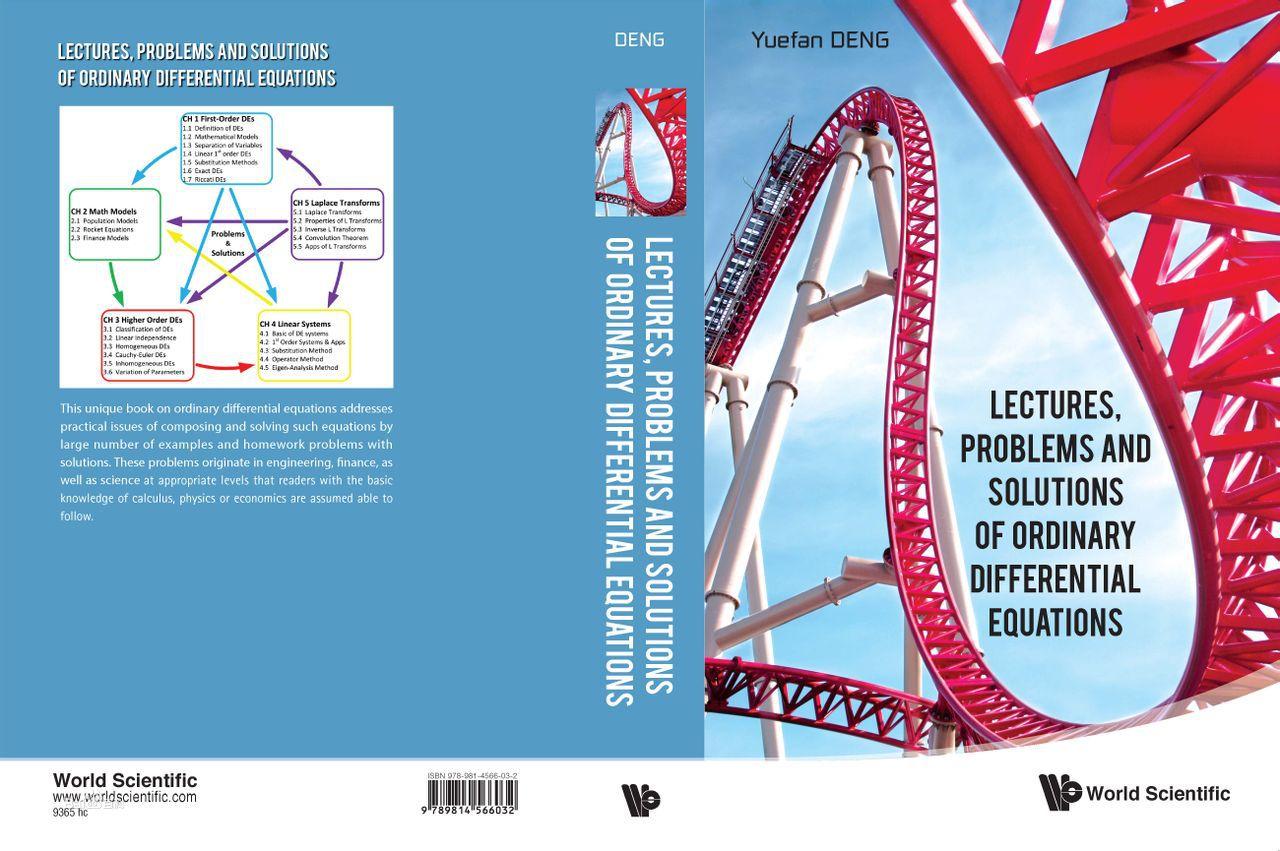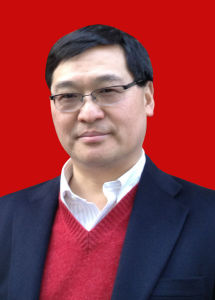人物介紹
鄧越凡 ,1962年12月出生,湖北省黃岡市人。1979年7月考入南開大學物理系,畢業時獲得“南開大學獎學金”。1983年8月通過中美聯合培養物理研究生的卡斯比(CUSPEA)考試,赴美國哥倫比亞大學就讀,在諾曼·克里斯特(Norman H. Christ)和李政道等指導下完成研究學習,1989年5月獲得哥倫比亞大學理論物理博士學位 。之後,在紐約大學科朗數學研究所 (Courant Institute)跟隨詹姆斯·格里姆做博士後研究三個月。於1989年9月加入紐約州立石溪大學(Stony Brook University) 套用數學系,1994年他31歲時被聘為該校終身教授,36歲時晉升為正教授。2010年山東省聘為泰山學者 海外特聘專家。2012年入選國家第八批“千人計畫”專家 ,同年底增選為數學物理專業委員會 。
工作經歷
鄧越凡1989年9月進入紐約州立石溪大學,成為J. Glimm、楊振寧、G. Brown、D. Sharp、J. Davenport、R. Peierls的同事與合作夥伴。其教學、研究活動遍及美國、中國大陸、香港、台灣、韓國、日本、巴西、俄羅斯、德國、英國、土耳其、加拿大、新加坡、沙烏地阿拉伯等,並在全球多個教育與研究機構任職或合作。主要工作經歷如下:
1989年9月—91年1月 紐約州立石溪大學套用數學系客座助理教授
1991年1月—94年5月 紐約州立石溪大學套用數學系助理教授
1994年5月—99年1月 紐約州立石溪大學套用數學系副教授
1999年1月— 紐約州立石溪大學套用數學系教授
1993年1月—00年9月 紐約州立石溪大學科學計算中心主任
1995年5月—96年9月 香港科技大學客座副教授
1997年5月— 紐約州立石溪大學生命醫學工程兼職教授
1998年6月—98年7月 洛斯阿拉莫斯( Los Alamos)國家實驗室客座研究員
1999年9月—00年4月 IBM 沃森(T. J. Watson Lab)實驗室研究員
1999年1月— 布魯克海文 (Brookhaven)國家實驗室客座研究員
2001年4月— 北京套用物理與計算數學研究所顧問委員會成員
2002年8月—06年6月 南開大學科學計算研究所所長 ,南開大學特聘講座教授
2009年1月-- 紐約州立石溪大學國際事務學院副院長、孔子學院常務副院長
在2013-2014 學術休假年,鄧越凡應邀在下列機構任訪問教授從事超級計算研究和教學:台灣國立成功大學,巴西聖保羅大學、新加坡科技研究局和新加坡國立大學。
學術成就
 教科書封面
教科書封面在紐約州立石溪大學的20多年間,鄧越凡發表80多篇論(之2014年)涵蓋物理、套用數學、計算科學、生命科學和生物醫學工程多領域,申請13項中美發明專利,出版兩本教科書。他已指導過20多名來自美國,德國,中國內地,香港,台灣,俄羅斯,墨西哥和西班牙的博士生,並給超過4500名大學本科生上常微分方程主課,每學期都被學生們評為優秀教授。與此同時,他對 高中生的培養也傾注了心血,其指導的20多名高中生中絕大多數學生獲得了美國“高中生天才獎”。
研究方向
鄧越凡是開發超級計算機在科學、工程、生物、醫學、金融等領域套用的先驅探索者之一,長期從事並行計算系統及其套用的研究,涵蓋高性能計算機設計、並行算法及其諸多領域的套用,包括分子動力學、數學、材料科學、流體力學、生命科學與醫學、經濟學等。繼用超級計算機探索肉毒桿菌分析(始於2007年)之後,他正帶領一批多領域的本科生、博士生和博士後與醫學院的生物醫學工程和臨床醫學教授和研究員們一起,用超級計算機探索血小板激化的原理(始於2009年)。小小的一顆血小板有近百億個原子要分析,巨大的計算負載給整個計算帶來了似乎難以逾越的困境。而且,這一研究是一龐大的系統工程,需要醫學、生物、物理、數學和計算方法等領域專業知識的綜合運用。如果這一研究取得成功,不僅會開闊超級計算機的套用領域,也將對解析和醫治危害人類健康的心梗、腦梗等頑疾有著深遠的意義。
工程研究
在美國哥倫比亞大學取得理論物理博士學位後,鄧越凡轉向蓬勃發展的超級計算機和科學計算學科,先後在著名的IBM沃森(T. J. Watson Lab)實驗室、美國洛斯阿拉莫斯 (Los Alamos) 國家實驗室、布魯克海文 (Brookhaven) 國家實驗室,以及韓國高等科學技術研究院做研究。同時,還主持過由中國科技部、上海市科委、山東省科技廳、美國國家科學基金會、美國國家能源部、美國軍事研究機構、美國國立衛生研究院和紐約州政府資助的多個項目,項目累計金額超過四千萬美元。
其主持的典型工程有:
Galaxy Computer :1998年為紐約州立石溪大學設計建造的超級計算機。
南開之星 :2004年為南開大學設計建造的集群超級計算機,當年排名全球42,獲得同類機全球最佳性能。
SeaWulf Supercomputer :2006年紐約州立大學斥資600萬美元,為紐約州立石溪大學與布魯克海文 (Brookhaven) 國家實驗室協助建造的近百萬億次並行機。
紅色神經元計算技術 :2005年中華人民共和國政府科技部的863計畫重大專項,千萬億次級高性能計算機關鍵技術預先研究項目:“紅色神經元”超高擴展高密度計算技術的課題負責人。
NYCCS :2006年紐約州斥資2600萬美元,為紐約州立大學、布魯克海文(Brookhaven)國家實驗室、哥倫比亞大學等協助建造的近千萬億次並行機及其套用研究。此系統在2007年6月公布的全球500強中排名第五。
CFA 項目:2009年中華人民共和國政府科技部資助的863計畫重大專項,新概念高效能計算機體系結構及系統研究開發項目的主要研究成員之一。
發明專利
鄧越凡是多項發明專利的發明人,已授權的發明專利有:
1. 內外連網路拓撲架構及自洽擴展該架構的並行計算系統, 專利號:ZL200610029753.0
2. 自洽多階張量擴展方法及多MPU並行計算系統, 專利號:ZL200610030472.7
3. 基於MPU網路拓撲結構的高效中長程通信路由方法, 專利號:ZL200610117704.2
4. 基於環繞網路與超立方網路架構的混合多階張量擴展方法, 專利號:ZL200710042397.0
5. 基於MPU架構的超高擴展超級計算系統, 專利號:ZL200710044230.8
6. A Mixed Torus and Hypercube Multi-rank Tensor Expansion Method, 美國專利號:US8,510,535 B2
7. An Ultra-scalable Supercomputer Based on MPU Architecture, 美國專利號:US8,159,973 B2
學術論文
1. Y. Deng, C. Marques,R. Powell and P. Zhang, Analysis of power and Linpackefficiencies of the world's Top 500 supercomputers, Parallel Comp.[span]Vol. 39, Issues 6-7 (2013) pp. 271-279,
2. R. Feng, P. Zhang, J.Davenport, and Y. Deng, Network design considerations for Exascalesupercomputers, International Conference on Parallel and Distributed Computing andSystems(Peer-reviewedand Accepted 9/6/2012)
3. Y. Deng, A. Ramos,and J. Hornos, Group theory insights for design ofsupercomputer network topologies, Int. J. Mod. Phys. BVol. 26 No. 31 (2012)1250169 (7 pp)
4. R. Feng, P. Zhang andY. Deng, SimulatedPerformance Evaluation of a 6DMesh/iBT Interconnect, SNPD 2012. 13th ACISInternational Conference on Software Engineering, Artificial Intelligence,Networking and Parallel/Distributed Computing (2012) pp.253-259
5. P. Zhang and Y. Deng, An Analysis of the Topological Properties of the Interlaced Bypass Torus (iBT)Networks, Applied MathematicsLetters, Vol. 25 Issue 12 (2012) 2147-2155
6. Y. Deng and P. Zhang, Perspectives onExascale Computing, New Computing Architectures and Applications, Vol.1. pp8-22 (9/2010)
7. P. Zhang and Y. Deng, Design and Analysis of Pipelined Broadcast for the All-PortInterlaced Bypass Torus Networks , IEEE Trans. Parallel andDistributed Systems Vol. 23Issue 12 (2012) pp. 2245-2253
8. P. Zhang, R. Powell, and Y. Deng, Interlacing Bypass Rings toTorus Networks for Generating more Efficient Networks, IEEE Trans.Parallel and Distributed Systems Vol. 22Issue 2 (2011) pp. 287-295
9. F. Feng, M. Xenos, G.Girdhar, J. Davenport, Y. Deng, D. Bluestein, Viscous Flow Simulation in a Stenosis Model Using DiscreteParticle Dynamics: A Comparison Between DPD and CFD, Biomechanics and Modeling in Mechanobiology Vol. 11Issues 1-2 (2012) pp. 119-129
10. T. Yamaguchi, T. Ishikawa, Y. Imai, N. Matsuki, M. Xenos, Y.Deng, D. Bluestein, Particle Based Methods for Multiscale Modeling of Blood Flow in the Circulationand in Devices– Challenges and Future Directions, Annals of Biomedical Eng.2009; 38(3): 1225–1235
11. Y. Chen and Y. Deng, A Detailed analysis of communicationload balance on BlueGene supercomputer, Comp. Phys. Comm., 180(2009), pp 1251-1258
12. Y. Deng, A. Korobka, Z. Lou, and P. Zhang, Perspectives on PetascaleProcessing, KISTI Supercomputer, Vol. 31(2008), pp.36-59
13. Y. Chen and Y. Deng, Task mapping on supercomputerswith cellular networks, Comp. Phys. Comm. 179(2008), pp. 479-485
14. X. Chen and Y. Deng, Simulations of a specificinhibitor of the disheveled PDZ domain, J. Mol. Modeling, Vol.15 (2009), pp. 91-96
15. K. Oh and Y. Deng, A efficient parallelimplementation of the smooth particle mesh Ewaldmethod for molecular dynamics simulations, Comp. Phys. Comm. 177(2007),pp. 426-431
16. B. Fang, G. Martyna, and Y. Deng, A fine grained parallel smooth particle meshEwald algorithm for biophysical simulation studies: applications to the 6Dtorus supercomputer, Comp. Phys. Comm. 177(2007), pp.362-377
17. Y. Chen, X. Chen, and Y. Deng, Simulating BotulinumNeurotoxin with Constant pH Molecular Dynamics in Generalized BornImplicit Solvent, Comp. Phys. Comm. 177(2007), pp.210-213
18. P. Rissland and Y. Deng, Supercomputers and their effectson molecular dynamics, IEEE Potentials,April/May Issue, 9-12 (2005). Chinese Translation appeared in ChinaComputer WorldVol. 34 (May 2005)
19. B. Fang and Y. Deng, and G. Martyna, Parallel FFT on QCDOCsupercomputer, Comp. Phys. Comm. 176(2007) 531-538
20. G. Han, Y. Deng, J. Glimm, G. Martyna, Error and timing analysis ofmultiple Time Stepping for MD, Comp. Phys. Comm. 176(2007), pp. 271-291
21. X. Chen and Y. Deng, Botulinum structures at varioustemperatures and pH values, J. Mol. Modeling, 13(5) (2007) 559-572
22. Y. Deng, J. Glimm, J. Davenport, X. Cai, and E. Santos, Performance Models on QCDOC for MolecularDynamics with Coulomb Potentials, Int. J. High PerformanceComputing Applications.Vol. 18, Num. 2 (2004) 183-198
23. Y. Deng, J. Glimm, and J. Davenport, Global Communication Schemes onQCDOC , IEEE Transactions on Parallel and Distributed Computing.
24. B. Li and Y. Deng: Biography of Prof Chen Ning Yang(in Chinese, Word format), Biographies of ContemporaryChinese Scientists, Vol. 3 (1994). English translation (in PDF)appears in "C.N. Yang: A Great Physicist of the 20th Century", Chapter 19, editedby C. S. Liu and S.-T. Yau
25. Yasar and Y. Deng, D. Saltz, and R. Tuzun: Guest Editors for New Trend in High Performance Computing, Special Issue of ParallelComputing. Vol. 27 Issues 1-2 (2001)
26. N. Stojic and J. Glimm and Y. Deng and J. Haus, Transverse magnetic modes in two-dimensionaltriangular photonic crystals Phys. Rev. E, Vol. 64(2001), pp. 1-7
27. Y. Deng and A. Korobka, Performance of a supercomputerBuilt with Commodity Components, Parallel Computing, Vol. 27Issues 1-2(2001), pp. 91-108
28. Y. Deng, J. Glimm, Y. Wang, A. Korobka, M. Eisenberg, and A.P. Grollman, Prediction of Protein Binding toDNA in the Presence of Water-Mediated Hydrogen Bonds, Journal ofMolecular Modelling. Vol. 5(1999) 125-133.
29. S. Chen, Y. Deng, and X. Nie, Y. Tu Clustering Kineticsof Granular Media in Three Dimensions, Physical Letters,Vol. 269(2000), pp. 218-223
30. K. Chu and Y. Deng, Quick Minimization of TotalEnergy of Large Lennard-Jones Clusters , Grand Challengesin Computer Simulation,Proceedings of ASTC Conference. Ed. Adrian Tentner,San Diego, CA (1999), pp. 37-42
31. Y. Deng, R. Peierls, and C. Rivera, An adaptive loadbalancing method for parallel molecular dynamics simulations(in pdf or ps), Journal ofComputational Physics. Vol. 161(2000), pp. 250-263
32. K. Chu, Y. Deng, and J. Reinitz, Parallel Simulated AnnealingAlgorithms by Mixing States, Journal of ComputationalPhysics.Vol. 148 (1999), pp. 646-662
33. Y. Deng and C. Rivera, Simple energy minimization for hugeLennard-Jones clusters by dramatic parameter reduction, Applied Math LettersVol. 12, (1999) pp.119-125
34. Y. Deng and C. Rivera, Approximate energy minimization for LargeLennard-Jones clusters, Journal Global Optimization. 16(2000) pp. 325-341
35. Y. Deng and R. Peierls, An Asynchronous DecompositionApproach to Parallel Global Optimization, Applied Math Letters. Vol.11(1998), pp. 55-59
36. J. Asvestas, Y. Deng, J. Glimm, and F.Tangerman, ElectromagneticScattering from large cavities, Communications of Applied AnalysisVol. 2, Num. 1 (1998), pp. 37-48
37. Y. Qian and Y. Deng, A Lattice BGK Model for ViscoelasticMedia, Physical Review Letters. Vol.79No.14 (1997), pp.2742-2746
38. R. Alan McCoy and Y. Deng, Parallel embedded-atom methodsimulations with delayed electron density approximations, Computer PhysicsCommunications, 100(1997), pp. 41-46
39. R. Alan McCoy and Y. Deng, Parallel Particle Simulations of Thin-Film Deposition , Int. J. HighPerformance Computing Applications, Vol. 13, No. 1 (1999), pp. 16-32
40. Y. Deng, M. Mu, and C-C Chou, Numerical Methods forSimulating Ginsburg-Landau Vortices,in Proceedings of High PerformanceComputing 1996, Ed. Adrian Tentner, San Diego, CA (1996) pp. 96-100
41. Y. Deng and R. A. McCoy, Computing Sticking Coefficientsfor Cu-Cu byLocalized Molecular Dynamics on Parallel Processors, in Proceedings of HighPerformance Computing 1996, Ed. Adrian Tentner, San Diego, CA (1996) 18-24.
42. M. Mu, Y. Deng, and C-C Chou, Ginsburg-Landau Vorticesfor Type-II Superconductors: A Numerical Study, SIAM J. Sci. Comp.V. 19, No 4, (1998) pp. 1333-1339
43. C-C. Chou and Y. Deng, Numerical Solutions of aNonlinear Evolution System with Small Dissipation onParallel Processors, J. Sci. Comp.Vol. 13 No. 4 (1998) pp. 405-417
44. Y. Wang and Y. Deng, Multi-item stochastic inventorymodels with constraints and their parallel computation,in ComputationalEconomic Systems: Models. Methods and Econometrics, Advances inComputational Economics, Vol. 5(1996) pp. 103-122
45. C-C Chou and Y. Deng, Decomposing 40 Billion Integersby Four TetrahedralNumbers, Math. Comp. V. 66 N218 (1997) pp. 893-901
46. Y. Deng, J. Glimm, Q. Yu, and M. Eisenberg, GlobalMinimization for Problems with Multiple Local Minima, Appl. Math. Lett.Vol 6 (1993) pp. 89-90
47. C-C Chou, Y. Deng, G. Li, and Y. Wang, Parallelizing Strassen's method for matrixmultiplication on distributed- memory MIMD architectures,in InternationalJournal of Computers and Mathematics with Applications,30 (2) (1995)pp. 49-69
48. Y. Deng, A. McCoy, R. Marr, R. Peierls, and O. Yasar, Moleculardynamics on distributed-memory MIMD computers with load balancing, Appl.Math Letters, V. 8(3) (1995)pp. 37-41
49. Y. Deng, R. A. McCoy, R. B. Marr, R. F. Peierls and O.Yasar, Molecular dynamics for 400million particleswith short-ranged interactions, Proceedings of HighPerformance Computing 1995, San Diego, CA (1995) pp. 95-100
50. Y. Deng, R. A. McCoy, R. B. Marr, and R. F. Peierls, AnUnconventional Method for Load Balancing, 7th SIAM Conference onParallel Processing, San Francisco, CA (1995) pp. 645-651
51. G. Campbell, Y. Deng, J. Glimm, M. Eisenberg, and A.Grollman, Analysis and prediction of hydrogen bonding of protein-dnacomplexes on parallel processors, J. Comp. Chem, Vol 17 (15) (1996)pp. 1712-1725.
52. J. Asvestas, B. Bielefeld, Y. Deng, J. Glimm, and F.Tangerman, Boundary integral methods applied to electromagnetic scattering problems onparallel processors, Proc. Amer. Math. Soc.Vol 122 (1994) pp.719-726.
53. Y. Deng and C. N. Yang, Waring's Problem for PyramidalNumbers , Science in China (Series A), 37 (3), (March 1994)pp. 377-383
54. Hu Wang, Y. Deng, J. L. Stephenson, and R. Tewarson, Anefficient algorithm for solving n-nephron models of the Renal Inner Medilla,International Journal of Computers and Mathematics with Applications,28(5) (1994) pp. 1-12
55. Y. Deng, J. Glimm, and D. Sharp, Mixing and Chaotic Microstructure , Los AlamosScienceNovember Vol. 21 (1993) pp.124-132
56. Y. Chen, Y. Deng, J. Glimm, G. Li, D. Sharp, and Q. Zhang, Arenormalization group scaling analysis for compressible two-phase flow, J.Phys. Fluids A5 (11) (1993) pp. 2929-2937
57. G. Campbell, Y. Deng, J. Glimm, and Q. Yu, Analysis andprediction of protein binding on dna: pattern recognition of hydrogen bonds,in High Performance Computing and its Applications in the Physical Sciences(1993) pp. 248-256
58. Romy Hoque and Y. Deng, Frontiers for the Teraflop in the21st Centuryin CSI Communications.Vol. 17 Num. 1 (1993) pp. 5-12
59. Y. Deng and C. N. Yang, Eigenvalues and eigenfunctionsof the Huckel Hamiltonian carbon-60 , Physical Letters A,Vol.170 (1992) pp. 116-126.
60. Y. Deng, J. Glimm, and D. H. Sharp, Perspectives on Parallel Computing , DaedalusVol 12 (1992) pp.31-52
61. Y. Chen, Y. Deng, J. Glimm, and G. Li, Parallel InterfaceMethods for Multi-phase Flow Problems on iPSC/860,in IntelSupercomputer Systems Conference Proceedings: Technology Focus Conference(1992) pp. 377-391
62. Y. Deng and J. Glimm, Fluid Dynamics Using InterfaceMethods on Parallel Processorsin Parallel CFD. Implementations andResults Using Parallel ComputersEd. Horst Simon, MIT Press (1992) 257-270.
63. F. Brown, N. Christ, Y. Deng, T. Woch, and M. Gao, Nature of the deconfining phase transition inSU(3) gauge theory Phys. Rev. Lett.61 (1988) 2058-2062
64. Y. Deng, Simulating lattice gauge theory onspecial-purpose supercomputers, Ph.D. ThesisColumbia University(1989). Generous reference to my thesis.
65. Y. Deng, Energy density and pressure inSU(3) Lattice Gauge Theory at Finite Temperatureed. A. S. Kronfeldand P. B. Mackenzie, Nuclear Physics B (Proc. Suppl.)9 (1989) pp.334-339
66. Y. Deng, The performance of the microcanonicalupdating algorithm,ed. K. Haller et al. in Proceedings of the Storrs Meeting on Particles andFields,(1989) pp. 238-241, World Scientific, Singapore

